A Moveable Feast
This article first appeared in the Oct./Nov. 2021 issue of Adventure Cyclist magazine.
Halfway into the 300-mile, 10-stage Slovenia Green Gourmet Route, our crew of three cycled beneath a castle tower into Štanjel, a perched medieval village that was once a Roman fortress. From this position on a plateau in Slovenia’s Karst Region, which forms the geographical synapse between the Alps in the north and the Adriatic Sea to the southwest, vineyards and cherry trees interspersed with forests carpeting the Vipava River valley below. Residents from Štanjel’s population of about 350 chatted on the steep, cobbled alleys connecting their stacked-stone houses. Unlike us — snapping photos every few feet — they were blasé about their impossibly photogenic habitation.
In the castle courtyard, which doubles as the village bistro, we took a table and ordered a mid-ride snack of local prosciutto, cheese, warm bread to sop up olive oil, and cold beer. The terrace’s surroundings were a study in tasteful, rugged simplicity in which stone and wood meet wine glasses and earthenware, and good, fresh ingredients are logical rather than marketing pretense. The setting, we agreed, was a microcosm of Slovenia generally and a good representative of our route, which was designed to give cycling, community-based tourism, and gastronomy equal billing.
When the plates were cleared, we spread out a map and charted our upcoming stages, which would venture deeper south into the Karst Region. After, we marked the path ridden so far. Starting from Slovenia’s mountainous north, quiet asphalt streets and packed-gravel forest roads had ushered us through an undulating landscape littered with steepled settlements. Along the way, the route linked culinary experiences that didn’t just sate my hunger but inspired my palate — a far cry from my typical trail meals of rapidly melting chocolate and fistfuls of peanuts.
Our adventure had begun three days prior. It was early June as we pushed our bicycles to the central market in Ljubljana, Slovenia’s capital, to stock up for our first stage. With limited time before boarding a train that would carry us, our gravel bikes, and gear to the head of the Slovenia Green Gourmet Route, or SGGR, we weaved through the giant sun umbrellas covering fruit and vegetable stands. We squeezed between baby strollers and grandmothers with cloth shopping carts toting baguettes, leafy spring onions, and daisies. Wooden tables displayed pyramids of tomatoes, peppers, apples, and boxes of strawberries so plump you could smell the juice. After handing over euro coins to vendors, dried figs, plums, and cherries came back in paper bags and were inserted, Tetris-style, into our packs. Bananas went straight into our jerseys.
Flush with rations, we pedaled to the train station. My riding companions explained that the SGGR combines some of Europe’s best cycling and, though Slovenia was named the European Region of Gastronomy for 2021, some of the continent’s most unheralded food culture. Our odyssey, they continued, would ride past, and occasionally visit, just-minted Michelin restaurants, since the country earned its first stars in 2020 — the same year Slovenes took the top two podium spots at the Tour de France (with champion Tadej Pogaar winning again in 2021). The route would pass rivers and lakes and vineyards and follow part of this year’s Giro d’Italia, which ducked into Slovenia for a stage.
After traveling west by rail from Ljubljana, which is located in the middle of this compact central European country of two million, our itinerary would cycle across the southern apron of the Julian Alps along the Soa River. From there, we’d ride south, paralleling the Italian border through ancient wine territory toward the sea. Another train would take us back through the capital to the Sava River valley in the nation’s eastern half. A couple of stages later, we’d hang left and north to the Pohorje Massif along the Drava River to the SGGR’s terminus in the city of Maribor.
If Slovenia is shaped like a chicken, as locals contend, our itinerary — averaging 50 kilometers or 30 miles daily on mixed surfaces with around 1,500 feet of climbing — would start in the heart, catch the railway to the tail feathers, ride down to the drum leg, cycle across to the breast, and finish in the neck.
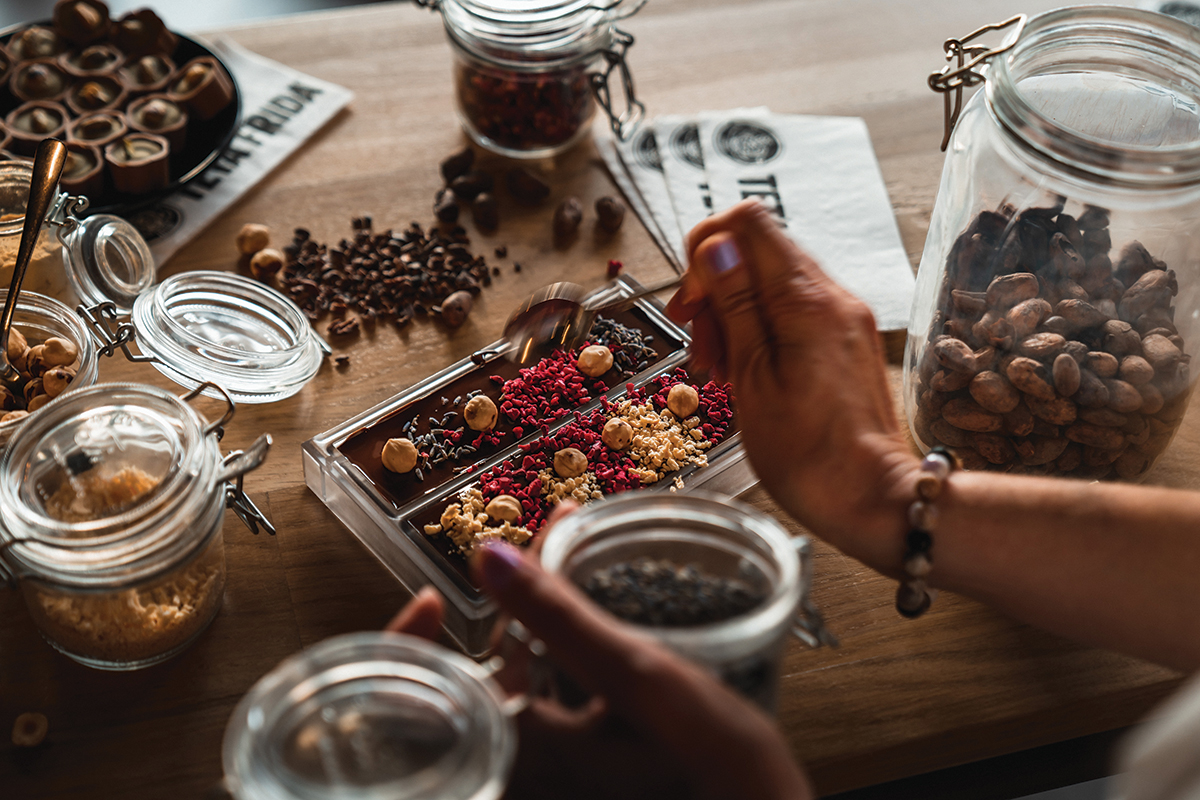
I boarded the train and sat with my nose nearly pressed against the window as the Alps came into focus. I caught excited eyes with our team’s other two members: experienced bikepackers and, not coincidentally, the Slovenia Green Gourmet Route’s designers. I was getting a chance to cycle the itinerary a week before its actual launch because I live in the region (Croatia) and know these tourism-development specialists for their reputation creating innovative products that dovetail self-locomotion, sustainability, and local culture.
The pair, who have the relaxed air of folks who ride bicycles for a living, assured me the SGGR will be a flagship route in the country’s Slovenia Green series of itineraries, which provide independent adventurers the information necessary to discover Slovenia. They also made clear that we’d be putting in relatively long days so they could perform a troubleshooting inspection along the route before its “opening.” Their not-so-hidden message: I’d have to keep up.
“The SGGR is an exercise in layering responsible travel,” Jan Klavora told me as our train chugged through alpine foothills. Klavora runs cycle-tourism development for Goodplace, the sustainability-focused, Ljubljana-based NGO that created the SGGR at the Slovenian National Tourist Board’s behest. “Destinations along the route have to qualify for each layer. First, each has to be green certified, which means meeting a list of strict criteria. Then, the stages between spots need to be low-traffic roads and maintained gravel paths. The destinations need to properly represent our country with food and hospitality. And, of course, the cycling must be both epic and doable for most. Basically, locations need to be 11s on a scale to 10.”
The train rumbled and hissed to a stop in Most na Soi, a town at the confluence of the Idrijca and Soa rivers. It was suddenly storybook Slovenia. We pedaled from the station into the Julian Alps and then funneled north into a canyon cradling the Soa. Just skirting the southern boundary of Triglav National Park and the country’s highest peak, the 9,396-foot Mount Triglav, we stopped on the Napoleonov Most (Napoleon’s Bridge) outside the town of Kobarid and looked down into the fast-moving water.
Every visiting travel writer has taken a crack at describing the Soa River’s color. I have done so, with questionable success, in a dozen stories. There’s no denying the extraterrestrial hue of the waterway, which runs from the Alps to the Adriatic. On this occasion, as we stared into the glacial river (usually clear turquoise against a limestone bed), this year’s exceptional snowmelt gave it a milky, Bianchi-green complexion.
“It’s hard to overstate how much the Soa means to Slovenia,” said Matija Klanjšek, our trio’s third cyclist and the route’s cartographer. “It provides the foundation for the region’s history, traditions, and adventure sports.” Besides his original task of laying out the SGGR’s course, Klanjšek’s job was manifold during our expedition. He checked and doublechecked everything from GPS coordinates to riding surfaces that may have changed due to weather or roadworks. He kept an eye out for alternative paths for those not keen on 10 percent gravel climbs. He also tracked options for riders who do want bigger ascents and longer stages.
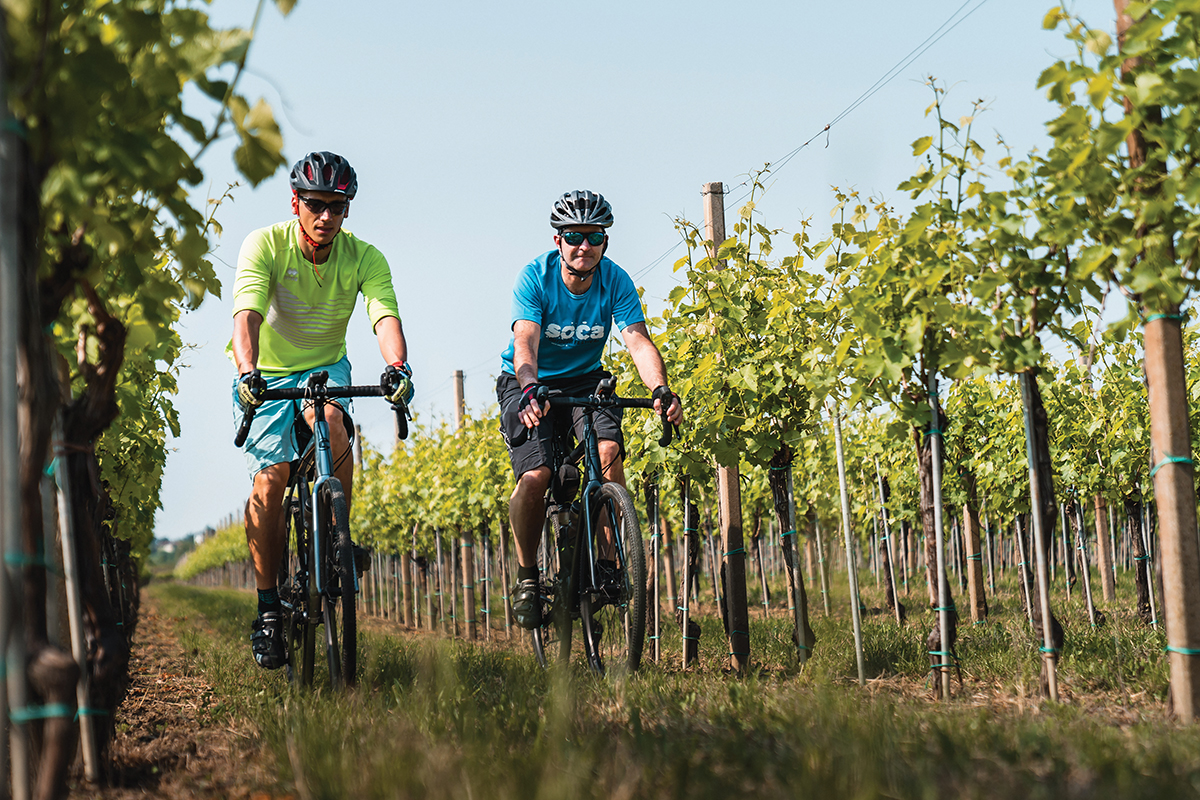
In Kobarid, we stopped at Slovenia’s only two-Michelin-starred restaurant, Hiša Franko, and met with the husband-and-wife team of Valter Kramar, sommelier and cheese monger, and Ana Roš, chef extraordinaire. Kramar took us on a tour of the restaurant’s cellar, where shelves of giant cheese wheels — growing moldier and more delicious — aged for up to four years. He told us that high quality and rich taste are due to the cows’ diets of mountain herbs and flowers. Like many Slovenian delicacies, he explained, nature’s simplicity drove the process.
From the restaurant, we took one of cartographer Klanjšek’s longer, alternate options through the communities of Idrsko, Livek, Livške Ravne, and Kambreško — none with a population more than 400. I began to feel that familiar sense of timeless freedom cycling creates. We glided along remote byways bisecting this sliver of Slovenia territory sandwiched between the Soa and Italy. Multicolored beehive boxes peppered hillsides of knee-deep grass, which swayed and danced in waves. Villagers stopped hanging hay in their traditional wooden racks to watch us pass. We took turns leading climbs and then, with whoops and mischievous laughter, claimed ridgeline summits from one another. The reward: expansive vistas of a topography rippled by valley troughs and hilltop crests where collections of tidy, variegated family farms centered around church towers.
We ended the day in the Goriška Brda Region, among the country’s best wine areas. We hitched our bikes in the town of Dobrovo at Klet Brda Winery, which represents a cooperative of some 400 family vineyards. In a tasting room surrounded by big bay windows, Boris Leskovar, the head of the wine shop, opened a bottle of an indigenous white variety, Rebula. The sun was setting across vines running to the horizon. The landscape and climate had begun to change from alpine to something more sultry, more Mediterranean. We lifted our glasses and toasted another stage. “Here in Goriška Brda, everything happens in the vineyards,” Leskovar said. “Our gold is the soil and our winegrowers.”
One could drive much of the route we rode, of course. Doing so, however, fundamentally changes the focus from natural rhythms and intentionality to one sealed in an automobile. The chance for cultural interactions such as asking for directions — or merely saying hello — replaced with crowded roads and parking woes.
The SGGR exemplifies Slovenia’s general tourism strategy, which encourages self-powered travel and trains to experience heritage, geographical wonders, and gastronomy. Tour de France winner Tadej Pogaar highlighted this when I interviewed him following our tour. “In Slovenia we have so many different destinations to visit,” he told me, “so if travelers come to vacation in Slovenia they can easily go on the bike to enjoy the nice roads, also great culinary experience with great food.”
Recently opened routes such as the SGGR, the Juliana Trail (a 166-mile trek around Triglav National Park), and the Walk of Peace (a 137-mile hike along a World War I frontline) naturally disperse the tourism-traffic footprint and alleviate bottlenecks. When one calculates how important landscape is to Slovenia’s travel offer, the country’s bantam size, and its surging popularity with nearly 16 million overnight stays in 2019, then paradigm-shift success is less about being trendy and more about survival.
Over the last two decades, sustainability has become Slovenia’s modus operandi. In turn, the country has achieved a growing reputation for responsible tourism among in-the-know travelers. That notoriety has enabled the nation to punch above its weight while surrounded by larger neighbors: Austria to the north, Croatia to the south, Italy to the west, and Hungary to the east.
“The idea for this kind of sustainability was unavoidable because we knew we didn’t have the capacity for mass tourism,” Maša Klemeni, a Slovenian Tourist Board coordinator for research, development, innovation, and EU projects, told me. “Over the years, we made a shift from promotion to development — our nature dictated what we had to do. The Green Scheme of Slovenia Tourism was a chance for us to look at what our main advantages are.”
Klemeni explained the SGGR is important not only because all the stage towns and cities are internationally green certified, but the route also highlights lesser-known places that represent the country’s true character. Being green is important, she said, but creating solid products links destinations, increases visibility, and encourages responsible operators. “If we lose the quality of our environment, tourism will disappear,” she continued. “Sustainability is not just an environmental concern, it’s also economic.”
International validation came in 2016 when Slovenia became the first entire country certified as a Green Destination, scoring 96 out of 100 on such diverse criteria as wildlife protection, waste disposal, and corruption. In 2017, Slovenia was named “the world’s most sustainable country” after earning a National Geographic World Legacy Award. At present, 59 individual cities and towns have been awarded the Slovenian Green certificate. These locales, in turn, host 80 percent of the country’s tourism arrivals.
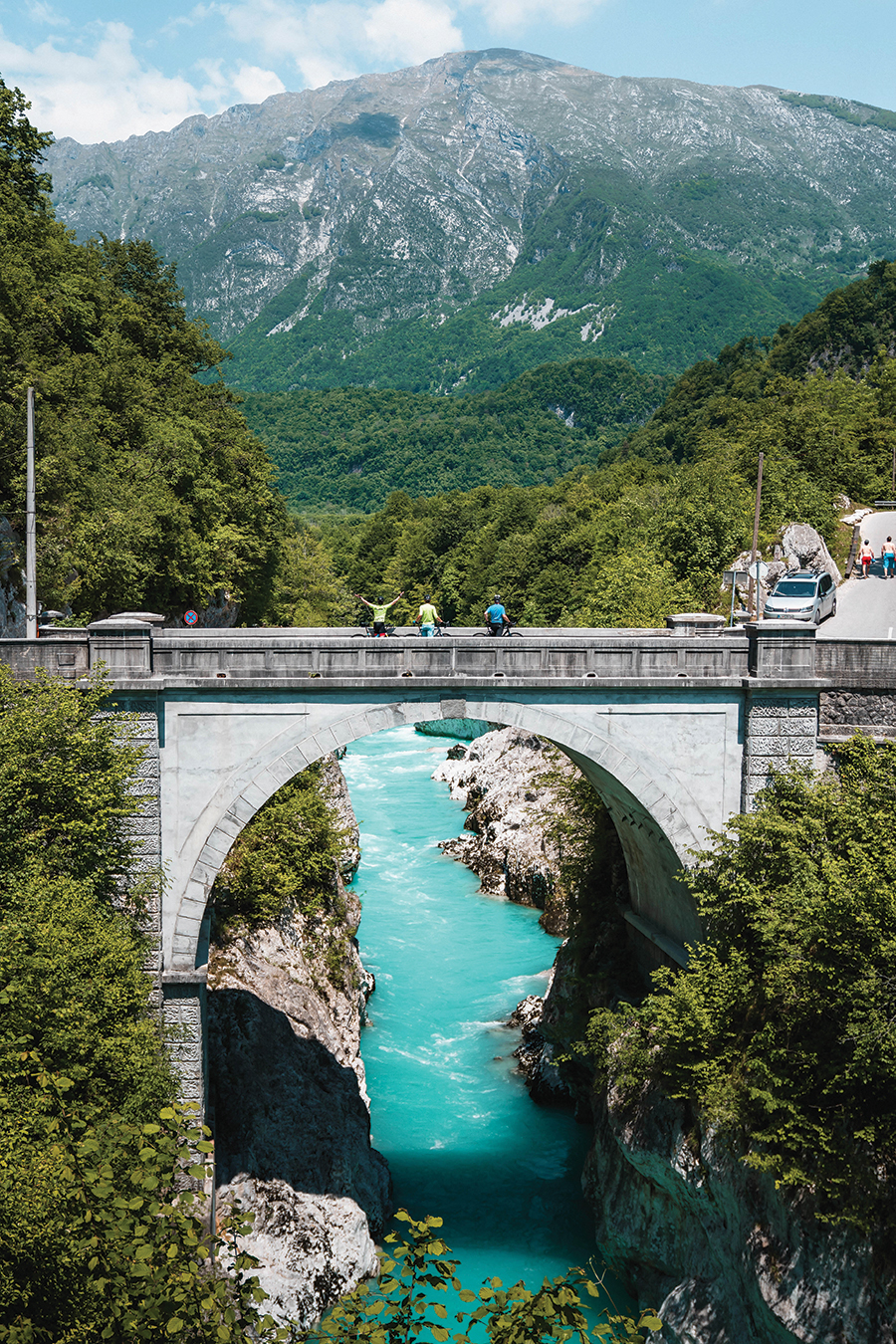
“Slovenia is well arranged for active tourism because people are taking control of their own situation and it is a place where ‘going local’ is one of the main attractions,” said Albert Salman, the president and founder of Green Destinations, over the phone from Amsterdam. His organization provides the base criteria for, and certification of, the Slovenia Green label. “The scale in Slovenia is great for cycling because it is not too large and has many kinds of landscapes, clean air, mountains, and rural towns that remind you of 200 years ago.”
From the Goriška Brda Region, the route continued to the border, where Slovenia’s city of Nova Gorica meets Italy’s Gorizia — the setting of Hemingway’s A Farewell to Arms. I’d ridden myself into basic cycling shape. In deference to the famous author, it was time to focus on gastronomic conditioning. Luckily, as we entered the Vipava Valley and then crossed into the Karst Region, the opportunities for stepping up our fitness regimen came fast.
In the tiny village of Slap, we reserved a table at Majerija, a restaurant in a centuries-old house surrounded by herb gardens used to create hyper-local dishes. We handed over decision-making to our waiter, who served us food-and-wine-paired courses that included lightly fried dandelions with a honey yogurt sauce, a sublime duck pate with translucent bread chips, and mouflon coupled with a Vipava Valley cabernet sauvignon from the nearby Poljšak Vineyard.
We rode through the village of Kobjeglava to meet the Šuka family, which has been making prosciutto for generations. We toured their drying rooms. Our guides seemed all too happy to help with our training as we gobbled without restraint. Outside the town of Komen, we gathered in the cellar of otar Wines, where Vasja otar makes organic wines with his father. Fresh off the trail and still wearing our gloves and helmets, we tasted some of his reds, whites, and sparkling varieties.
When I asked about Slovenia’s sudden renown for gourmet tourism, otar contemplated and told me his aim is to make great, natural wines. If others like them, that’s great. “One is tempted to say we are suddenly having success, but this is many years in the making,” otar said, finishing a glass. “It’s just that the rest of the world is starting to hear about it.”
At the end of the fifth stage, we boarded a train east for the route’s final legs. We stopped over in Ljubljana, the railway’s main hub. It was Friday and the city’s weekly Open Kitchen, where dozens of restaurants set up outdoor stations, was heating up. Chefs searing seafood rubbed shoulders with others grilling meat. Brewers hawking craft beer were positioned near taco stands and ice cream makers.
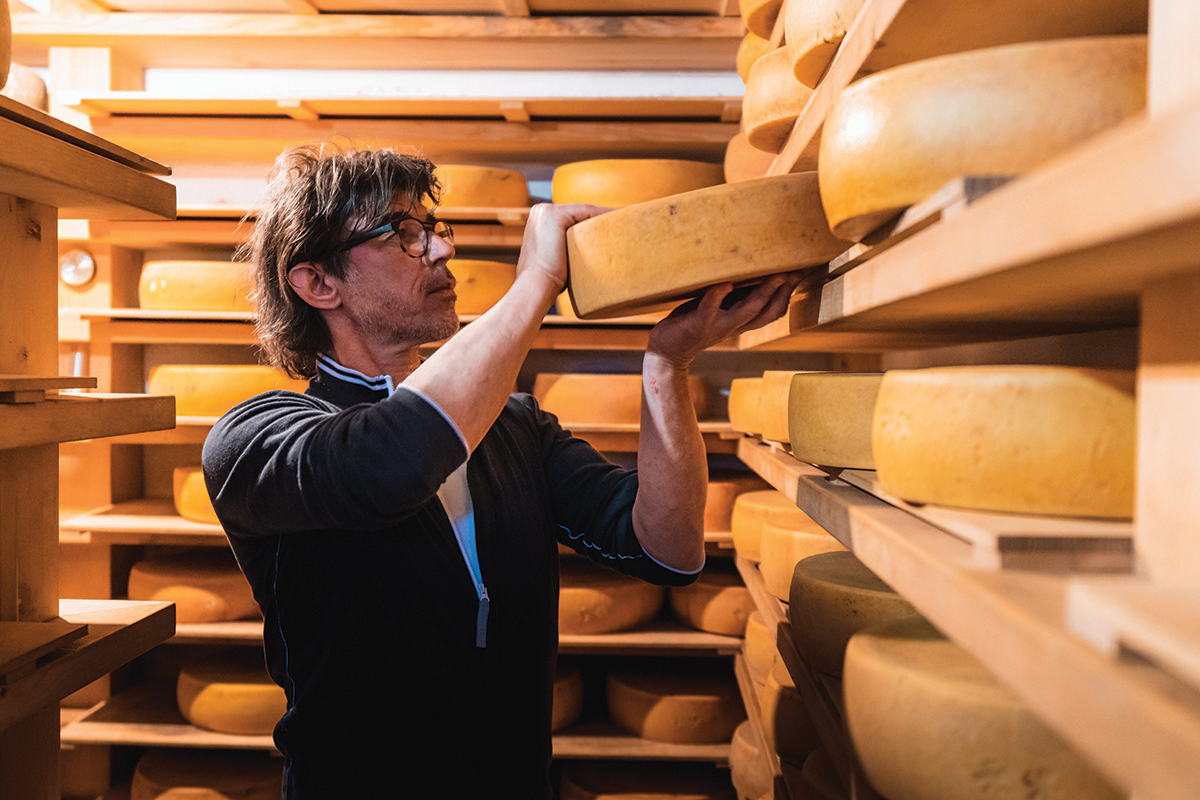
The capital’s entire population seemed to be playing hooky in the cafés radiating from the main square steeped in history measured in millennia. The city’s Baroque Cathedral stood behind. Its castle towered above. A series of footbridges — with names pegged to their lore: the Triple Bridge, the Cobbler’s Bridge, the Butcher’s Bridge — crossed the Ljubljanica River. For the second time in a week, we chose the Dragon Bridge and pedaled back to the station, this time bound for the Sava River valley.
The train left us in the Lower Sava Valley, eastern Slovenia’s Posavje Region. Vineyards like unfurled bolts of corduroy, farms, and stands of beech trees crowded either side of the Sava, which is the country’s longest river and flows more than 600 total miles into Croatia, Bosnia and Herzegovina, and Serbia. Riding along its banks, enveloped in a communion of green, I was reminded that 60 percent of this country is covered in forests and, owing to its biodiversity, more than 50 percent of the land is protected — the most in Europe.
I was also struck and embarrassed by the realization that I had never really explored Slovenia’s eastern half. This fertile expanse, which combines easy riverside cycling with more challenging stretches of rolling climbs and descents, should be an epicenter for pedaling gourmands. The region is one of the nation’s most important wine-growing areas, it’s a magnet for fishing, and it overflows with pears, apples, sausages, and cheeses. This is also castle country with three 12th century turreted masterpieces on our route.
“When travelers think about Slovenia, they usually think about the western side,” Klavora told me as we rode to the castle overlooking the town of Sevnica. “Part of it is because of famous sites like the Julian Alps, Lake Bled, Lake Bohinj, and Mount Triglav. Unfortunately, after they’ve visited them, they don’t travel east. As a Slovene, I love it here. It’s like a great secret with traditional villages, food, wine, and quiet roads following rivers. For cyclists, it is ideal.”
Pogaar agreed. The two-time champion thinks Slovenia is the optimal place to ride and build strength in so many capacities necessary to race the most famous cycling course in the world. “In Slovenia it’s really easy to train, as we have so many options: flat, climbs, steep climbs, everything. The winter is not too cold, or if it’s too cold, we just drive to the coast,” he said, adding that the summer is perfect weather to train in. “We have really good options to train on the bike and I think that’s why it’s really a good place to become [a] cyclist and to become [a] good rider.” Riding here myself, I can see how this terrain created a champion.
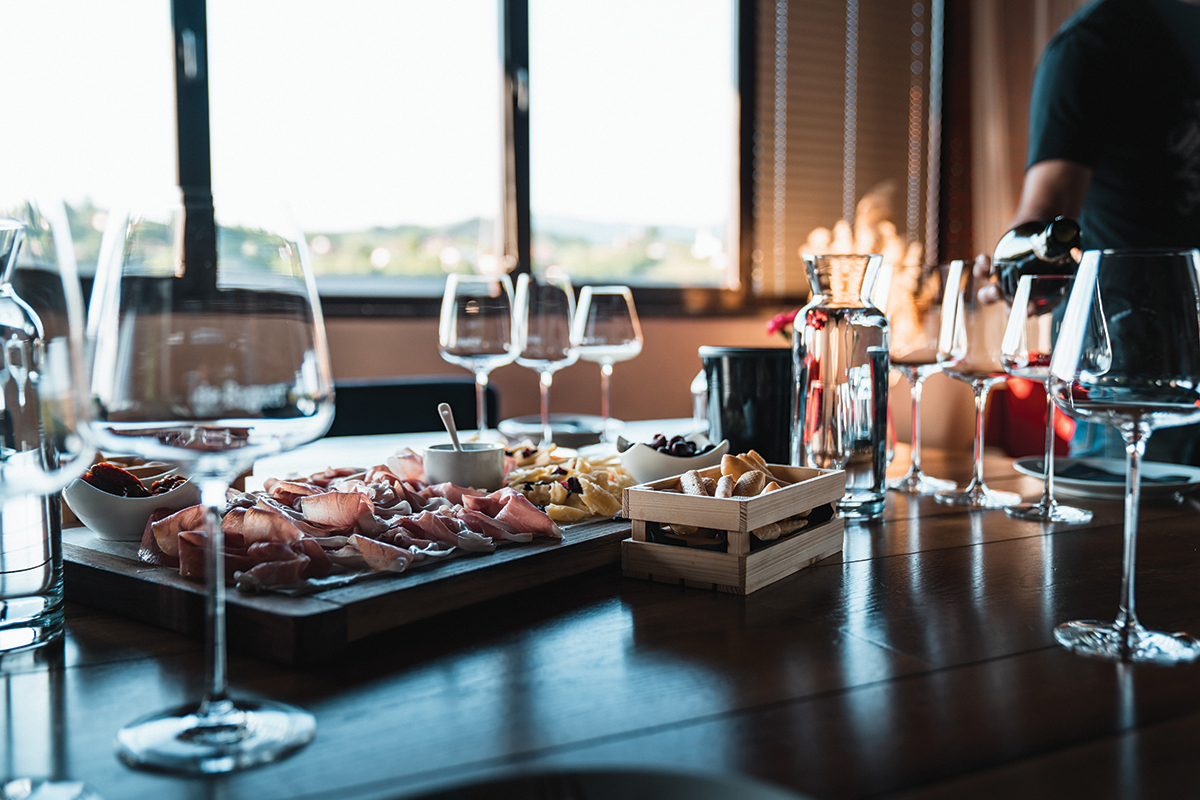
Our route followed a bicycle path along the Sava. It then left the river and headed north, eventually hugging the Croatian border through the towns of Podetrtek and Rogaška Slatina. We reached the country’s second longest river, the Drava, in Slovenia’s oldest town of Ptuj, which dates to the Iron Age and was later a Roman army post.
A swirl of towers, ancient monasteries, and turn-of-the-century Viennese architecture presided over a tangle of cobblestone streets. We rode up to our lodging, the Panorama Bed & Breakfast, which, true to its name, provided an unencumbered view of the Ptuj castle with its ninth century foundations. The next morning, before the final stage, the owner served us her homemade yogurt, cheese, salami, juice, bread, and marmalade. The spread felt symbolically, simply, Slovenian.
The last day’s route followed the Drava to Maribor, Slovenia’s second largest city. The ride unfolded like an SGGR greatest-hits sampler platter. We pedaled on gravel, easygoing asphalt, and then a bike path into the waterside Old Town, where terracotta-roofed buildings and majestic, arched bridges reflected on the river’s surface. We stopped for a celebratory wine at the Old Vine House. Growing up its front wall, the world’s oldest producing vine has been filling glasses of celebration for nearly five centuries.
We then headed to Hiša Denk, which was awarded a Michelin star in 2020. The owner and chef Gregor Vrako was just coming in from foraging for ingredients. When asked about food in Slovenia, he grinned and said, “It’s simple — I make food from what I have. Everywhere is my playground. Now I’ve been picking elderflowers. I go to the mountains for mushrooms. People here eat real food and so that’s what I make. I am honored and proud to be recognized [by Michelin], but the truth is, we’re still the same restaurant.”
The route ended, appropriately but almost unbelievably, in Chocolate Village: a glamping resort, opened by the Teta Frida chocolate company, on the banks of the Drava. I sat on my abode’s porch and opened a beer. I sifted through items in the welcome box, all made with chocolate — toothpaste, gin, soap, lotion, and a condom. A few feet away, our gaggle’s other two members, the SGGR’s designers, sat on their decks inspecting their own goodies. I raised my glass: “To a route that thought of everything.”
Nuts & Bolts
We live in uncertain times with protocol changing daily. As of this writing, travel from the U.S. to Slovenia is discouraged, but nonessential travelers may enter Slovenia if they are either fully vaccinated or have recently recovered from COVID-19. There is an online form available for easier entry into the country, available through the embassy.
Going Green
To see the full itinerary, including a map of the route, go here. You can either download all the information for free, or contact them directly at the bottom of the page to connect with a travel agency.
Getting There
The main hub is Ljubljana, Slovenia’s capital and largest city. Fly there via a number of airlines, likely with a stop in Istanbul, Munich, or Zurich first. From there, follow the author’s route, which starts with a scenic train ride west to Most na Soi.
Eating
Hiša Franko: Located in the Soa Valley, Slovenia’s only two-starred Michelin establishment works with area farmers and foragers.
Majerija: This must-visit restaurant, with a seasonal menu and on-site gardens, is set against vineyards in the Vipava Valley.
Hiša Denk: The Michelin-starred mainstay combines innovation with simple traditions just outside the city of Maribor.
Sleeping
Kamp Koren: A kayaker’s — and cyclist’s — heaven with riverside tent sites, tiny houses, and eco chalets along the Soa River.
Panorama: This friendly B&B has homemade food, welcomes cyclists, and overlooks Ptuj, Slovenia’s oldest town.
Chocolate Village: The delicious glamping resort in Maribor sits on the banks of the Drava River and mixes chocolate with everything.
Sipping
Klet Brda: The cooperative winery, located in the Goriška Brda Region, represents 400 families and produces wonderful red, white, and sparkling wines.
otar Wines: Outside the town of Komen, this family winery uses responsible methods to make delicious, natural varieties.
Old Vine House: On the Drava River in Maribor, this is the home of the world’s oldest grape vine and a place to learn about and taste great wine.

